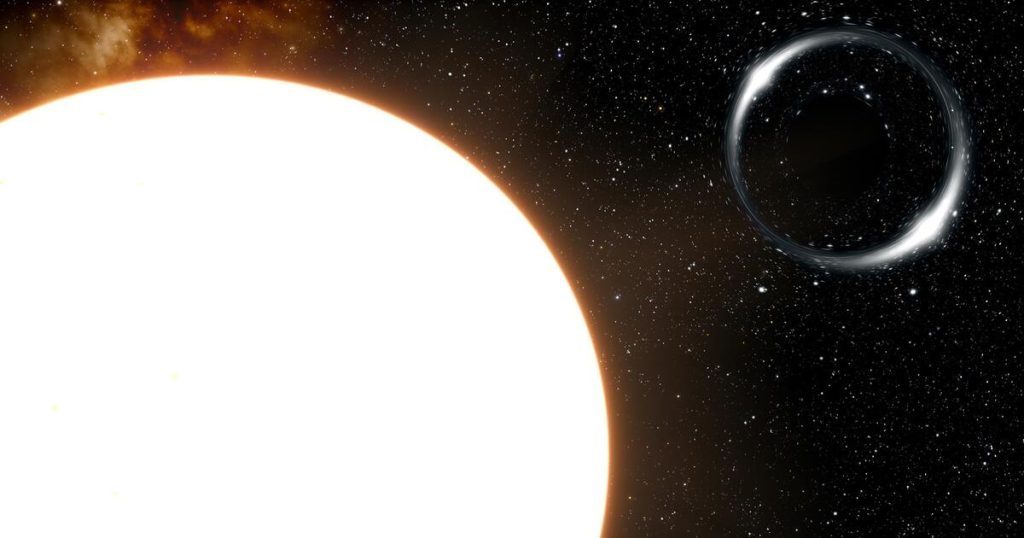Updated on 09/11/2022 at 11:44 AM
- Less than 1,600 light-years from Earth: researchers have found the closest black hole to date.
- With the new method used, the team hopes to make more such discoveries in the coming years.
At a distance of less than 1,600 light-years from Earth, scientists have discovered a candidate for the closest black hole to date. The object orbits a star in the constellation Ophiuchus, which is similar to our sun, they reported in the journal Monthly Notices of the Royal Astronomical Society.
There is no plausible astrophysical scenario that “can explain the orbit and has nothing to do with a black hole”. With the new method used, the team hopes to make more such discoveries in the coming years.
The black hole “Gaia BH1” is less than half the previously known object
The mass of black holes is concentrated in an extremely small volume. Supermassive versions are likely to be found in the centers of all major galaxies, explained scientists led by Karim El-Badri of the Max Planck Institute for Astronomy in Heidelberg and the Harvard-Smithsonian Center for Astrophysics in Cambridge. Black holes with stellar mass – about five to a hundred times the mass of the Sun – are more common.
There are an estimated 100 million of them in the Milky Way alone – only a few of them have been confirmed so far. Usually these are energetic objects that glow brightly in X-ray light. On the other hand, the black hole that may have been discovered now is dormant – and therefore difficult to detect.
The researchers used data from the European Space Agency (ESA) Gaia space probe, and targeted measurements with telescopes were also used. Slight shifts in the star’s position revealed the presence of the companion object. She added that the black hole “Gaia BH1” is less than half the distance of the nearest known such object. It has a mass of about ten solar masses and orbits a Sun-like star with an orbital period of 185.6 days and an average Earth-sun distance.
Researchers are convinced of the new method
The “Gaia” astronomy mission is designed to make high-resolution measurements of the positions of stars. When two objects rotate around each other, each usually describes a small oval in the sky. With orbital data for so-called binary star systems, scientists specifically searched for black hole candidates.
“Although there were many alleged discoveries of such systems, almost all of them were later refuted,” Al-Badri explained. “This is the first clear detection of a Sun-like star in a wide orbit around a stellar-mass black hole in our galaxy,” he says.
A light year is the distance light travels in a vacuum in one year: 9.46 trillion km. (sbi/dpa)

“Social media evangelist. Baconaholic. Devoted reader. Twitter scholar. Avid coffee trailblazer.”







More Stories
These brands are most vulnerable to phishing scams
Apple Maps Now Has a Web Version and Wants to Challenge Google Maps
Best AirDrop Alternatives for Android